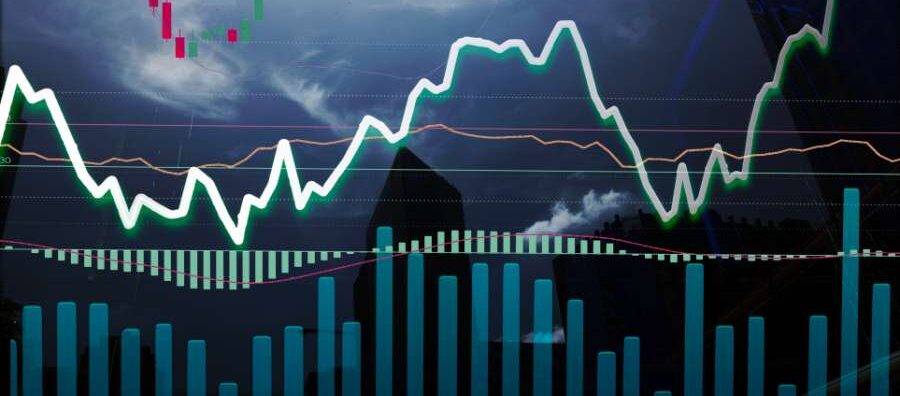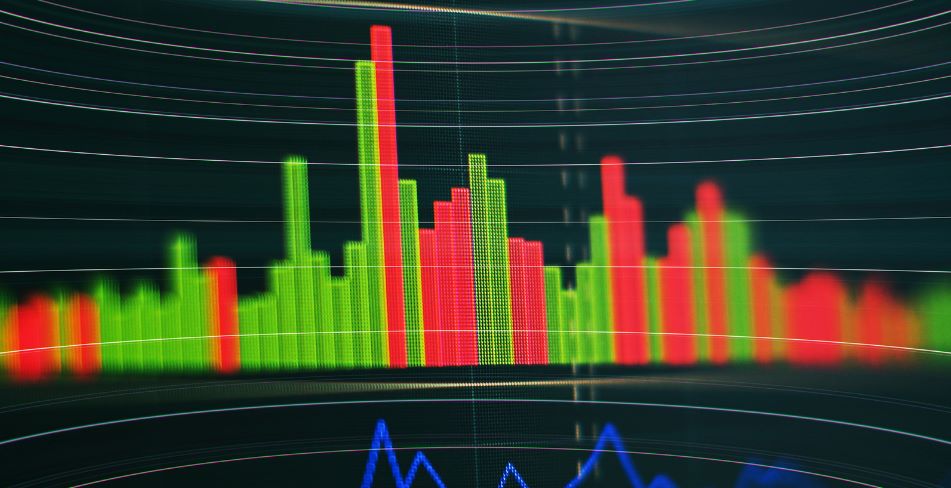Building on the fundamentals of the MACD formula and parameter settings covered in the previous article, the next step is to explore one of MACD’s essential trading techniques — the MACD crossover. Similar to the moving average crossover, the MACD crossover is a powerful tool for identifying market trends and timing entries.
In this article, we’ll provide one of the most completed guide to mastering the MACD crossover strategy and its applications across financial markets. Key takeaways:
- Differences of MACD crossover above and below zero-line;
- How volume enhance reliability and accuracy in MACD crossover;
- Enhancing MACD crossover strategy with other indicators/analysis method.
MACD Crossover Explained
The MACD crossover refers to the point where the DIF line (the difference between the short-term and long-term EMAs) intersects the Signal Line (the EMA of the DIF line).
To quickly grasp the concept, think of the MACD line as representing real-time price and the signal line as a moving average; their interaction mirrors the relationship between current price and average price. There are two primary crossover types based on the MACD line’s movement relative to the signal line:
- MACD Bullish Crossover: When the MACD line crosses above the signal line from below, it signals a bullish trend, as the short-term average moves above the long-term average.
- MACD Bearish Crossover: When the MACD line crosses below the signal line from above, it signals a bearish trend, as the short-term average falls below the long-term average.
MACD vs MA Crossover
The MACD Crossover is theoretically built on the difference between two moving averages, this raises the question: Why not just use the moving average instead? Why introduce the additional complexity of the MACD?
To answer to that, let’s break down with an example. Below is a daily chart of Forex pair, USD/JPY. In the indicator window, the MACD is set with default parameters (12, 26, 9), while the price chart shows two moving averages (12-day and 26-day).
When comparing the MACD crossover to the moving average crossover, the example on the right side of the chart highlights a clear advantage. MACD crossover signals tend to appear earlier than traditional moving average crossovers, giving traders the opportunity to enter positions at more favorable points. This earlier signal provides MACD with a significant edge in timing trade entries.
Similarly, the shaded area on the left side of the chart reveals a key drawback of the MACD crossover: it often generates more false signals than traditional moving average crossovers — Frequent crossover.
This prompts the next question: when is the MACD crossover most reliable, and how can traders minimize the risk of false signals? We will address these questions in the following sections.
MACD Bullish Crossover
A MACD bullish crossover occurs when the MACD (DIF) line crosses above the Signal line, signaling potential uptrend momentum. Identifying the crossover position on the MACD indicator—in relation to the zero line—is crucial for traders as it helps determine the strength and reliability of the signal. Let’s explore the implications of crossover positions relative to the zero line.
1. MACD Bullish Crossover Above Zero-Line
When a bullish crossover happens above the zero line, it signals that the short-term average price is higher than the long-term average price, indicating a strong uptrend. In this case, the crossover acts as a strong buy signal, typically appearing during a solid uptrend.
Taking to the 4-hour chart of Dow Jones Index Futures below, after the “Double Bottom Reversal” pattern confirmed a bullish reversal, Dow Jones Futures entered an uptrend. The numbers plotted with blue horizontal line on the chart highlight key instances where a bullish crossover above the zero line occurred, signaling an entry points to capitalize on the buying opportunities during this uptrend.
2. MACD Bullish Crossover Below Zero-Line
When the MACD bullish crossover is below the zero line, it usually indicate the market is in a downtrend. While a bullish crossover still signals a potential buy, its strength is generally weaker compared to crossovers above the zero line. A bullish crossover below the zero line may suggest a possible reversal, but the signal carries less weight.
Referring to the same Dow Jones Futures chart above, the left side depicts a downtrend. Apart from point C, where a more significant upside is observed, the bullish crossovers below the zero line are notably weaker, often signaling short-term pullbacks within the overall downtrend.
It is worth noting that the scenario may differ during an uptrend. For instance, on the right side of the chart where the green horizontal line is marked, a bullish crossover below the zero line during a strong uptrend can still be considered a solid bullish signal, potentially providing an entry opportunity.
3. Quick Summary on Bullish Crossover
In general, we may determine the reliability and the strength of the crossover signal by identifying their position using the zero-line as benchmark.
A bullish crossover above the zero line often signals the end of a pullback in an uptrend, suggesting the trend may resume. If accompanied by a large bullish candlestick, it reinforces the signal as a strong buy opportunity.
A bullish crossover below the zero line can occur in both uptrends and downtrends. In a downtrend, it typically indicates a weaker buy signal, suggesting a potential rebound. However, during an uptrend, it signifies a strong buy opportunity, implying the short-term correction may have ended and the uptrend is likely to continue.
MACD Bullish Crossover With Volume
In addition to considering the zero line, analyzing trading volume can enhance the reliability of a MACD bullish crossover, especially when trading financial instruments like stocks and futures where volume data is readily available.
- Increased volume during a bullish crossover signifies strong buying interest, further validating the crossover signal.
- Conversely, low volume may indicate a lack of conviction, diminishing the signal’s reliability—particularly when the crossover occurs below the zero line or during a downtrend.
Taking Tesla’s stock price action from early 2024 as an example, Tesla was in a downtrend where three bullish crossovers below the zero line can be observed. The first two, marked with red lines, had balanced volume and led to a continuation of the downward movement.
However, the third bullish crossover occurred with a significant increase in volume. Despite some consolidation afterward, the price did not continue its downward trajectory, eventually leading to a strong rally.
MACD Bearish Crossover
1. MACD Bearish Crossover Below Above Zero-Line
A MACD bearish crossover above the zero line can occur in both uptrends and downtrends. In an uptrend, it typically signals a weaker sell opportunity, indicating the possibility of a price pullback. However, in a downtrend, it serves as a stronger sell signal, suggesting that a temporary rebound may have ended, and the downtrend is likely to continue.
The following refers to the same Dow Jones 4-hour chart as in the previous section. This time, on the right side of the chart, within the uptrend, the blue lines mark four MACD bearish crossovers above the zero line. All these crossovers occurred during minor pullbacks in the uptrend and offered limited significance.
On the left side of the chart, marked by the blue line (or point B), is a bearish crossover above the zero line during a downtrend. This happened at the same time as a candlestick that marked the peak of the rebound, signaling a strong sell opportunity.
2. MACD Bearish Crossover Above Above Zero-Line
MACD bearish crossover below the zero line typically occurs during a pullback in a downtrend, signaling that the pullback may have ended. If this is accompanied by a large bearish candlestick and a new price low, it strengthens the signal, indicating a strong sell opportunity with increased selling pressure in the market.
In the left section of the chart above, the two MACD bearish crossovers below the zero line are marked with red lines. The crossovers in examples point A and point C were accompanied by a large bearish candlestick breaking lower, making them strong sell signals during a downtrend.
3. Quick Summary on MACD Bearish Crossover
To sum up, when applying the MACD bearish crossover, our primary objective should be to identify crossovers that occur during a downtrend, aiming to capitalize on the downtrend momentum for short-selling opportunities.
The MACD bearish crossovers in an uptrend hold little value and can often be ignored—unless they occur during a trend reversal. However, a bearish crossover alone cannot predict a reversal; it requires confirmation through other indicator or signals, which will be discussed in the next section.
Enhancing with Other Indicators
The MACD is often used directly as a buy or sell signal, but for greater accuracy, it is strongly recommended to combine it with other indicators or analysis methods. Support and resistance lines, moving averages, and candlestick patterns are commonly used alongside MACD crossovers to improve decision-making.
Take, for example, the daily chart of Nasdaq 100 futures during early 2023. The MACD indicator highlighted three bullish crossovers, which, when combined with other methods such as support levels or moving averages, provided more reliable entry points and enhanced the accuracy of these signals.
Based on the example above, let’s have the key insight on the 3 crossovers signal convergence with other indicator/analysis method:
- First Crossover (Red): After a downtrend, Nasdaq 100 futures formed a support level and triple bottom. On the third touch, the support holding plus a bullish crossover (despite below the zero-line) could offer an entry for traders with higher risk-tolerance.
- Second Crossover: The triple bottom reversal is confirmed as Nasdaq 100 breaks above resistance. A moving average bullish crossover and a doji candlestick pattern also appear, while the MACD bullish crossover above the zero line further confirms the buy signal.
- Third Crossover: Nasdaq 100 futures are in a clear uptrend, trading above the moving average. After a pullback, another bullish crossover occurs, signaling a new buy opportunity.
Summary: MACD Crossover
The MACD crossover consists of two types: the bullish crossover and the bearish crossover. A bullish crossover occurs when the MACD line crosses above the signal line, which is a bullish signal. A bearish crossover occurs when the MACD line breaks below the signal line, indicating a bearish signal.
Since MACD is a trend-following indicator, the crossover is only suitable in uptrends or downtrends. Below are some tips summarized by TradeXplore on applying the crossovers:
- In an uptrend, a MACD bullish crossover suggests that a mid-term pullback may have ended. If accompanied by a large bullish candlestick breaking to a new high, it is a strong buy signal.
- Bearish crossover during an uptrend is a very weak sell signal and holds little value.
- In a downtrend, a bullish crossover is a weak buy signal, indicating that the market may experience a rebound.
- MACD bearish crossover during a downtrend indicates that a mid-term rebound might be over. If accompanied by a large bearish candlestick breaking to a new low, it is a strong sell signal.






